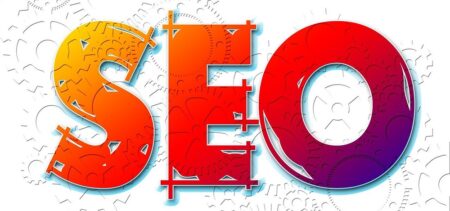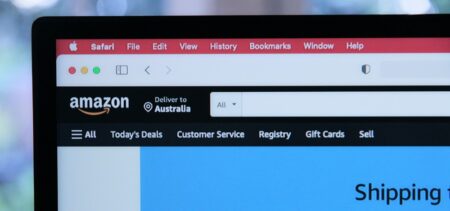When it comes to starting an online business, you have a lot of choices to make. The biggest of the choices may be the most important as they will ultimately define your business model and much of the future of your business.
In this post, we’re going to show you at a high-level each one of the major choices you need to consider when starting your online business along with the pros and cons so you can make the best decisions possible right from the beginning.
Let’s get right into it.
Who Do You Want to Sell To?
There are a million types of ecommerce stores, all with subtle differences and nuances. How the products are sources, the types of product, where the products come from, are they a curated collection. Let’s take a look at two of the major types of ecommerce businesses that you can run, then we will drill down even further.
B2B (Business-to-Business)
Business-to-Business refers to the model where one business sells to another business. There are both advantages and disadvantages to selling to other businesses versus selling to the end consumers. The pros of selling to other businesses are that order sizes and repeat orders are typically larger and more frequent, however, there are fewer businesses than consumer and sales cycles are typically longer with price being a heavy contributor to purchase decisions.
B2C (Business-to-Consumer)
Business-to-Consumer means you are selling directly to the end consumer that will be using the product. This is the most common type of business model and what most people think about when discussing building ecommerce businesses.
It should be noted as well that there are other business models that are less common, including B2G (Business-to-Government).
What Type of Products Do You Want to Sell?
Now that we’ve covered the two major types of online business models, let’s drill down a little deeper and look at the different type of products you can sell online:
Physical Goods
Selling physical goods is what most people think of when they think of an online store, and makes up the majority of online ecommerce businesses. Although physical goods are the most popular product type of item to sell, it also presents challenges including inventory storage, shipping, breakage, and insurance.
Example: DodoCase sells iPad and iPhone cases made using traditional bookbinding methods.

Bonus: We wrote the book on helping you find a great physical product to sell online. Click here.
Digital Goods
Digital goods are also a popular type of product to sell and has the advantage of not needing inventory storage or physical delivery like it’s physical product counterparts. Digital goods can be anything from music, ebooks, videos, images or software. The biggest disadvantage to selling digital products is piracy. However, because a digital product can be resold thousands of times over, their margins are considered the best and comes without the headaches associated with shipping and inventory management.
Example: Out Of The Sandbox sells premium themes for Shopify and does so through their own Shopify store. These themes are digitally delivered immediately after purchase.

Services
The third, slightly less common product type to sell online are services. Online services can range from consulting, web design and development, content writing/editing and a whole host of other service options. Selling services through an online store can be a great way to build credibility and gain exposure but typically comes with the limitation of scalability as services are typically delivered by a person and are therefore limited to that person’s time.
Example: Shopify Experts is a directory of freelancers and agencies that offer services to Shopify store owners. From setting up your business and marketing to design and photography. Many of these freelancers and agencies in the Shopify Experts directory use Shopify to host their website and sell their services directly to entrepreneurs.

How Do You Want to Acquire Your Products?
We’ve covered this before in a prior post, but the physical goods category (and even digital goods to a certain extent) can be broken down a number of different ways. One of the most popular ways is to break it down is by product acquisition type. The are four major type of methods for acquiring your products. Let’s take a look at each one below:
Make
Making your product is a common approach for many hobbyists. Whether it be jewelry, fashion or natural beauty products, making products yourself allows for the precise control over the quality and the brand but comes at the cost of high time commitment and scalability.
The primary costs associated with making your own products include the purchasing of raw materials, the storage of inventory and labor.
The most important thing to note here though is that not all products can be made by hand. Your product choices are limited to your skills and available resources.
Example: J.L. Lawson & Co. makes everything by hand in their studio in Joshua Tree, California. A family business that has been running three generations means every piece produced has a whole lot of pride in it.

Manufacture
Another viable option for acquiring your product and inventory is to find a manufacturer to produce the product for you. When sourcing a manufacturer, you have the option of sourcing one domestically or from overseas. As you might expect, a domestic manufacturer, in general, will cost more than a manufacturer from overseas countries like China, Taiwan or India.
Example: GameKlip started out with the founder making game controller clips that attach a real game controller and a smartphone for the ultimate smartphone gaming experience. After demand soared though, the founder was forced to begin full-scale manufacturing of the GameKlip just to keep up with demand.

Bonus: Check out our guide to sourcing a manufacturer from Alibaba. Click here.
Wholesale
Buying wholesale is a fairly simple and straightforward process. You buy your inventory (usually other brands) direct from the manufacturer or from a middleman supplier at a discounted wholesale rate, which you in turn, resell at a higher price.
Buying wholesale is a lower risk business model compared to manufacturing for a few reasons. First, you’re dealing with brands that are already established and validated on the market so you don’t run the risk of wasting time and money developing a product no one wants. Also, you don’t have to purchase as nearly as high of a quantity compared to manufacturing your own product. Minimum orders will depend on the manufacturer and product, however, they’re usually pretty reasonable and can even be as low as one unit.
Example: Lodge Goods sells a variety of well-made goods from craftsmen and manufacturers around America. By carrying other brands, they are able to offer a wide selection of products and brands.

Dropship
The main concept of dropshipping is selling products you don’t actually own. Working with dropship partners is not only a product acquisition model, but also includes product fulfillment. The process works by taking orders from your online business and forwarding them to your supplier/dropship partner. They in return, ship the product to your customer on behalf of your company. The key to making money with dropshipping is making a profit on the price difference between what you charge and what your dropshipping partners charge you.
The biggest benefit to dropshipping is the ability to offer a large selection of product without purchasing inventory up front and managing that inventory. Dropshipping can also be a great tool to help diversify your inventory and test products since it’s just a matter of adding the new product to your store.
Example: Right Channel Radios is the number one source for CB radios for your off-road truck. By utilizing dropshipping as the product acquisition method, the founder is able to offer a very wide range of products and accessories in a very specific niche without any inventory costs or risk.
Bonus: Read our full post of all the pros and cons of each type of inventory acquisition model. Click here.
How Do You Want to Compete?
Deciding how to compete is an important decision and can significantly shape the future of your business and dictate key business decisions. There are several common ways in which you can compete in a crowded marketplace. Let’s take a look at each of those options:
Price
Competing on price is typically not the best options for smaller retailers for the very reason that everyone bigger than you typically has better margins and can always go lower than you. This also in the bigger picture leads to price wars that just eat away at everyone margins.
Example: Walmart has always been known for their discount strategy and is big enough to make this strategy work for them. By purchasing products in massive quantities, they are able to get better pricing and pass that along to consumers.

Quality
Competing on quality comes down to having a superior or better-made product. This can be a great way to compete and there are signs the market as a whole is shifting towards longer lasting, well-made products.
Example: Dbrand sells vinyl skins for smartphones, laptops and game consoles. Recognizing that the current market lacked high-quality skins, cut with laser precision, Dbrand took it upon themselves to create them and quickly soared to the being the dominate player in the skins game.

Selection
Competing on selection is a great option for carving out your own space in the marketplace but also comes with the risk of increased inventory and storage of that inventory if you are utilizing any other method than dropshipping.
Example: Amazon is without a doubt the leader in ecommerce when it comes to selection. However, just because massive companies have large selections doesn’t mean you can compete on this. It simple means you’ll have to compete on the largest selection in a very niche category.

Value Add
One of the best ways to differentiate yourself in the market is to provide additional value to your customers that compels them to purchase from you. Content in the form of really great product descriptions, learning centres, installation guides etc. is a great example of ways to provide additional value to your customers.
Example: Right Channel Radios dropships their CB radios and accessories which mean margins are slim. This can make it difficult to compete effectively against other competitors with better margins. To compensate for this, Right Channel Radios offers a ton of extra value in the form of an education center and video review on most of the products.

Service
Competing on service can be difficult as a new small business but can be a winning strategy. Considering that word-of-mouth marketing is the most powerful form of marketing, it makes sense to compete and deliver an incredible customer experience that gets people talking.
Example: Zappos is known for their customer service with free shipping both ways, 365-day return policy, and 24/7 customer service. Zappos is also known for some interesting service records like a record setting 10-hour customer service call.

Conclusion
Answering the four major questions from this article will provide you with a good start to putting together some major components of your ecommerce business model. It’s important to keep in mind that some business model combinations will require a lot more work than others so be cognizant of the true amount of time you have to invest in your business and the time investment required based on your particular business model. This will not only increase your chances of success but also the amount of enjoyment you get from building, launching and growing your online business.
































